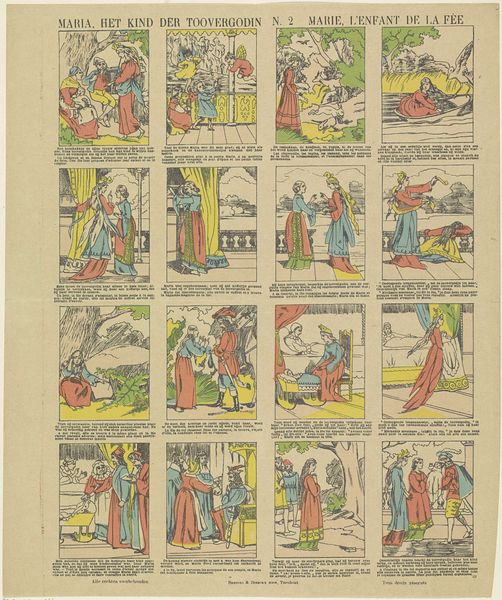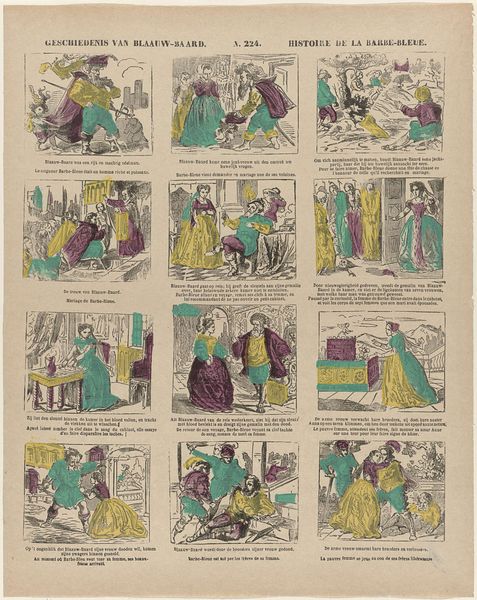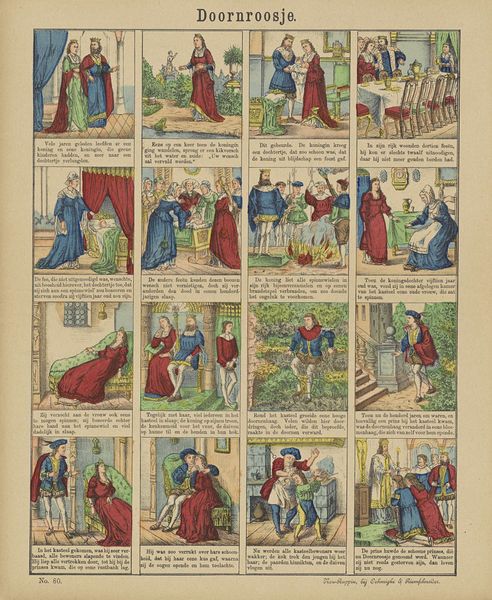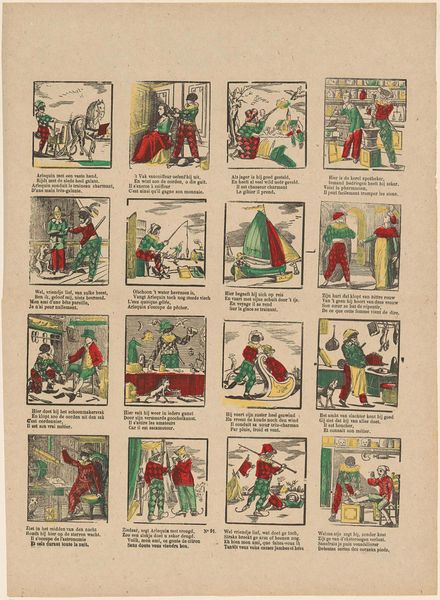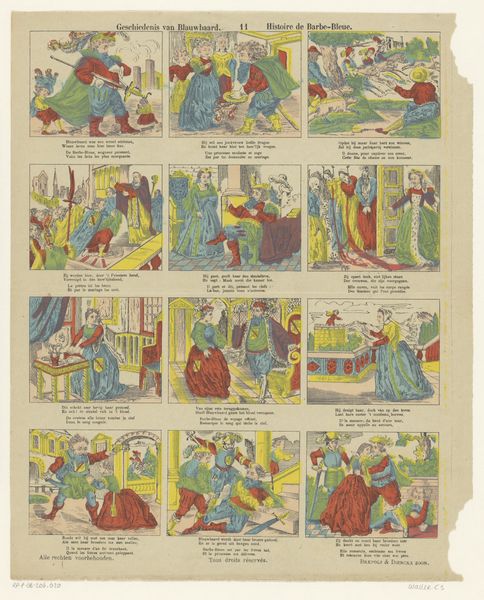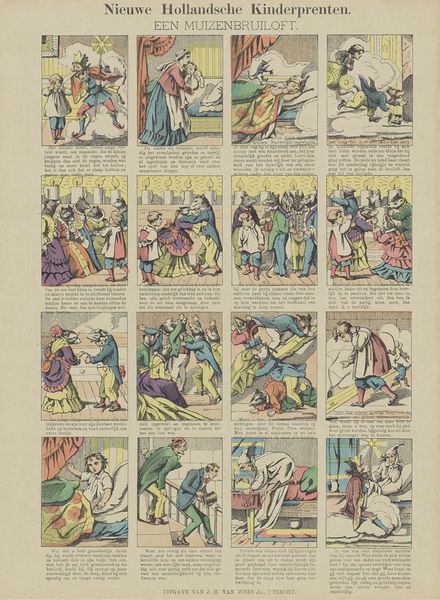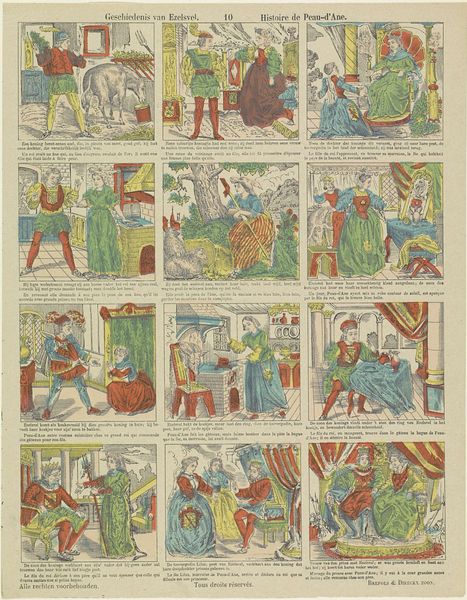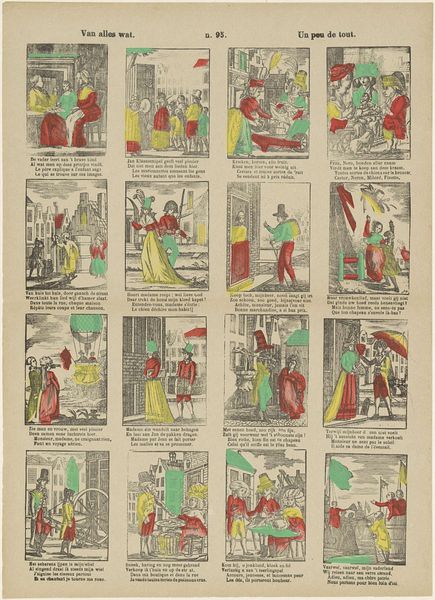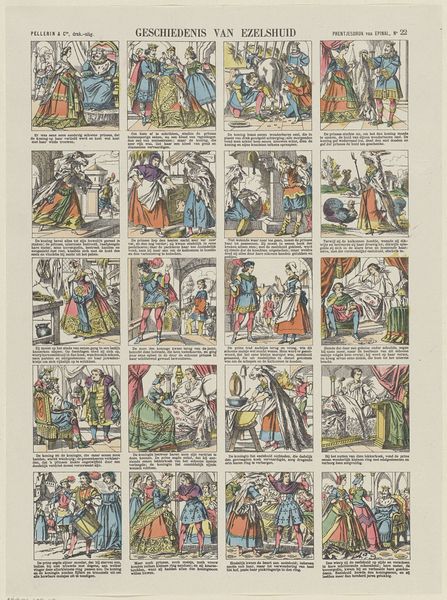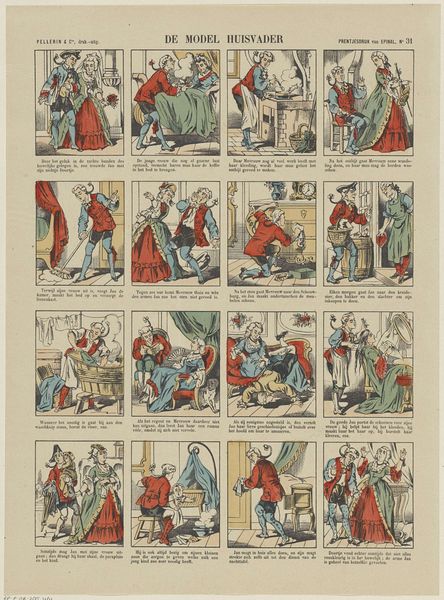
Maria, het kind der toovergodin / Marie, l'enfant de la fée 1833 - 1911
0:00
0:00
#
comic strip sketch
#
narrative-art
#
comic strip
# print
#
personal sketchbook
#
sketchwork
#
comic
#
pen work
#
sketchbook drawing
#
storyboard and sketchbook work
#
sketchbook art
#
doodle art
#
story boarding
Dimensions: height 371 mm, width 303 mm
Copyright: Rijks Museum: Open Domain
Curator: Here we have a print from Brepols & Dierckx zoon, dating from 1833 to 1911, titled “Maria, het kind der toovergodin” or “Marie, l'enfant de la fée”. Editor: My immediate impression is that this reminds me of an early comic strip or storyboard. The linear arrangement of scenes is very direct. Curator: Exactly! The piece has strong narrative art elements. Observe how the sequence utilizes symbols and repeated figures across various panels. This is typical of folk narratives where archetypes embody virtues and moral lessons. Editor: Yes, I see that in how the central figure, Maria, navigates each setting. It raises questions about how gender is portrayed within these simplified moral frameworks, don't you think? Does Maria act as an active agent or is she a passive subject shaped by events and expectations? Curator: A compelling point! In delving deeper, perhaps we can understand the evolution of female characterizations. Note the prominence of natural imagery: forests, bodies of water… What could those symbols denote within a culture's memory? Editor: To me, it speaks to an enduring fascination with fairy tales, as social anxieties projected through symbolism. But, I am struck by the seeming contradiction inherent in positioning women as either innately virtuous or potentially threatening. Curator: I agree there’s inherent tension there. But aren't these symbolic shorthands a quick way to embed moral lessons? Think of all the coded narratives woven through even a seemingly simple panel! Editor: Yes, they function effectively to transfer social ideas in a condensed format. It's striking to see such a long ago storyboard revealing societal themes so relevant to present-day conversations about gender and the projection of norms onto young women. Curator: The print's endurance as cultural artefact reinforces how these archetypes continually morph to match cultural moods. Understanding this historical symbol set offers tools to decode visual culture everywhere we look. Editor: Analyzing pieces like these shows us the potent visual grammar influencing public opinion even today. Curator: Indeed!
Comments
No comments
Be the first to comment and join the conversation on the ultimate creative platform.
